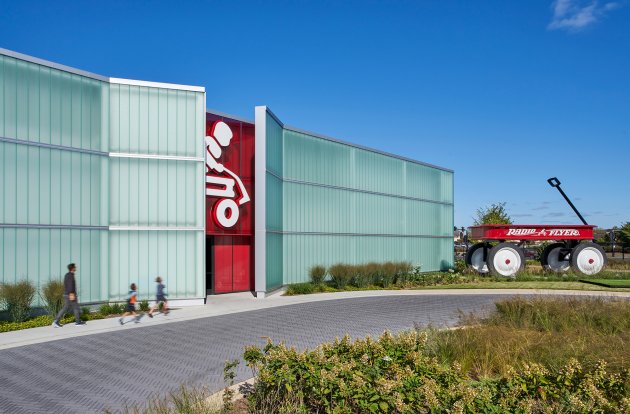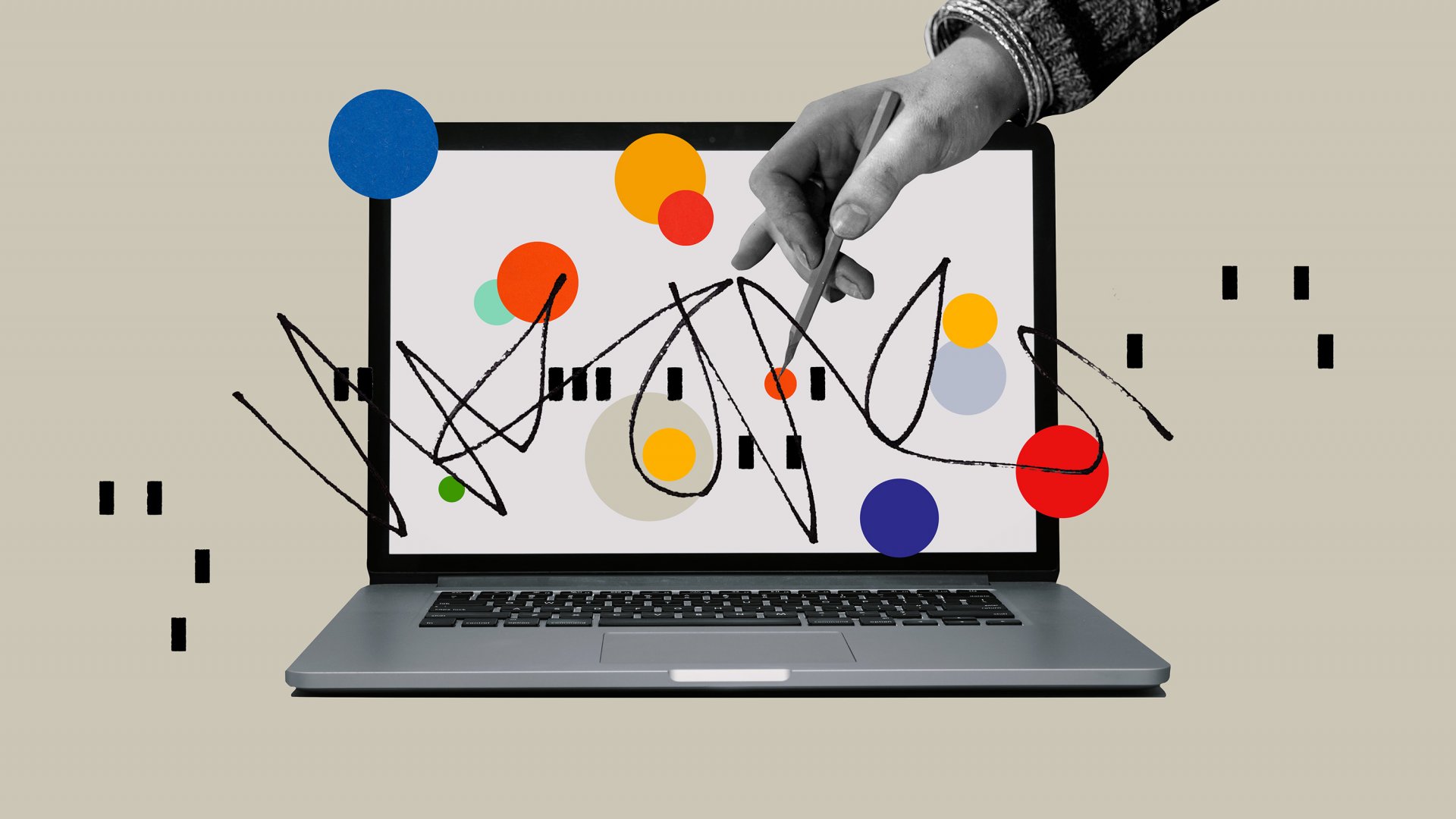Innovation doesn’t have to suffer when employees go virtual. Done right, it can even improve.
The 90-year-old Radio Flyer factory in Chicago is an exemplar of onsite innovation. Brainstorming takes place in the Engine Room, which is awash in whiteboards and Post-it notes. CNC machines and 3-D printers chug away in the Prototype Shop. In the bright, airy Play Lab, staff members observe children scooting around on the company’s newest children’s wagons, trikes, and electric cars.
“Our products are very physical,” says Robert Pasin, CEO of the business his grandfather founded in 1917. “We need to see and touch them. We need to see kids riding them.”
Radio Flyer–with annual revenue in the $150 million range–reliably develops 20 to 30 new products each year. In 2020, with the company’s 80-some employees dispersed to their homes as a result of COVID – 19, it maintained that pace with 25. Designers and engineers adopted a virtual whiteboard tool called Miro to collaborate on sketches.
Two employees remained in the plant to mock up prototypes, which staff members passed around among themselves, making contact-less handoffs in parking lots. In their homes or on deserted schoolyards, employees filmed their kids (and occasionally petite wives and girlfriends) using the toys and shared the results online to make changes.
Post-COVID – 19, Radio Flyer employees will return to their beloved building. But Pasin expects some changes wrought by the pandemic to stick. Among other things, the company will use video sessions to bring in customers like Walmart, Amazon, and Target at more points in the product-development process.
Teams will still use Miro, allowing some people to work from home. As a result, for the first time, Pasin is open to hiring geographically dispersed design and engineering talent.

“These kinds of blended situations give us much more flexibility,” he says. “There are definitely things worth keeping.”
Depending on whom you ask, working from home has been a blow or a boon to innovation. Among the pessimists is Nicholas Bloom, a professor of economics at the Stanford Graduate School of Business. Bloom says he has spoken with dozens of CEOs and employees who report that while work-from-home is effective for continuing current activities, creativity has suffered. And while “change and crisis” will drive some innovation, he doubts it will make up for constraints on creativity created by working from home. “I fear 2020 will be the year of little innovation, and 2021 the year of disappointment,” he says.
THE QUIET GROWTH OF RACE-DETECTION SOFTWARE SPARKS CONCERNS OVER BIAS
Yet some companies say productivity is up since employees disbanded to their dens and back bedrooms. Tempted by the opportunity to save money on rent, many businesses plan to continue at least some professional distancing post-pandemic. A recent survey of the Inc. 5000, our ranking of America’s fastest-growing private companies, found that two-thirds intend to somewhat or greatly increase employees’ ability to work from home. Around 2 percent will go all-in on virtual.
How, then, to keep creativity thrumming within digital work teams? Several innovation experts offered advice.
Embed in people’s lives: Innovation starts with understanding and empathy, achieved by observing in action those whose problems teams want to solve. That kind of research might actually expand under virtual business models. Companies can redirect budgets to dispatch small teams into the field, says Jay Erickson, chief innovation officer, and a founding partner at Modus, a digital design firm based in New York City. “The screen lets you talk to people more efficiently,” he says. “But the gems of insight come when you see a physician do something in a consulting room and ask, ‘Why did you do that?’ That’s how you discover something you would not have known to ask about.”
Such fieldwork is the lifeblood of IDEO, the iconic global design, and innovation company. Employees there have temporarily replaced visits to end-users’ homes and workplaces with diaries that research subjects create with photographs and notes captured on phones. With the diaries, which have always been part of IDEO’s toolset, innovation teams can collect data over weeks and months, compared with site visits, which are time-constrained, says Bryan Walker, managing director of design for change. And the practice is equally effective for businesses with and without offices.
Get physical, sometimes: Innovation requires trust: People must feel safe to proffer out-there ideas. One signal that you are among friends is eye contact, hard to achieve in Zoom where you can’t look simultaneously into the camera and at the faces on the screen.
Erickson recommends that virtual innovation teams come together periodically in-person for activities like ideation–but also to build their relationships. Such gatherings also help replace that sense of place lost along with a physical office. “The idea of place creates a sense of belonging to each other,” he says. “If you are gathering somewhere with some frequency, you can create that cultural connectivity.”
Bring in more viewpoints: Innovation thrives on varied perspectives and experiences. Digital collaboration can be almost endlessly inclusive. IDEO, Walker says, has invited in experts from around the world and “curated interesting, open conversations around topics we are interested in.” Erickson believes digital dispersion will lead to more joint ventures with employees from different companies coming together fluidly for projects.
Scott Anthony, the senior partner at the Boston-based strategy and innovation firm Innosight, recommends opening innovation sessions to more people within the business. “The more transparent you are about what you’re working on, the more likely someone will say, ‘That is interesting and there is something I can contribute,'” says Anthony, co-author of the new book Eat, Sleep, Innovate: How to Make Creativity an Everyday Habit Inside Your Organization.
Give voice to the voiceless: Innovation also benefits from contributions from all levels. Digital tools like Zoom have what Anthony calls a “democratizing effect” that may level creativity-killing hierarchies. “There is not someone sitting at the head of the table. Everyone is in their own little squares,” he says. “That gives a voice to someone with a contrarian view or who has less experience in the organization.”
Introverts, too, maybe more comfortable expressing themselves through Zoom chat and other digital tools, according to Walker. Like Radio Flyer, IDEO uses the collaborative whiteboarding tool, Miro. “Someone who doesn’t normally want the spotlight will drop in a visual and that will become the center of the conversation,” he says.
Find ways to build: Innovation advances through constant experimentation and prototyping. Digital products don’t pose many difficulties to dispersed teams. Companies that build physical goods, by contrast, need to bring people and products together for tests, limiting their ability to innovate virtually. But even then there are workarounds.
In the past six months, IDEO has been using more computer-aided design (CAD) and 3-D modeling, and its in-house prototyping shop is large enough to allow for social distancing. But the company has also provided one member of each project team with a home 3-D printer and distributed to designers prototyping sets that include things like foam core, X-Acto knives, and glue guns. “We’ve seen some pretty sophisticated prototypes built that way,” Walker says.
Keep individuals creative: Innovation declines along with team members’ energy and focus. To prevent participants from turning up drained, all the experts recommended setting aside at least one meeting-free hour before an innovation session. IDEO also suggests that some sessions take place over the phone, so participants can wander around while they talk.
Erickson recommends sessions allow for solo ideation, in which participants remain–muted–on the virtual hangout, sketching ideas before coming back to share. He also suggests building in group stretches and other opportunities to get up and move around.
Of course, nothing disrupts the flow of ideas like technical glitches. Group leaders should be trained in every tool being used in the session. For one meeting that included multiple brainstorming activities, Anthony’s company Innosight chose facilitators from the client company and ran them through simulations before the actual session to ensure their mastery. “Really,” Anthony says, “it is just a matter of overpreparing.”
INC / Balkantimes.press
Napomena o autorskim pravima: Dozvoljeno preuzimanje sadržaja isključivo uz navođenje linka prema stranici našeg portala sa koje je sadržaj preuzet. Stavovi izraženi u ovom tekstu autorovi su i ne odražavaju nužno uredničku politiku The Balkantimes Press.
Copyright Notice: It is allowed to download the content only by providing a link to the page of our portal from which the content was downloaded. The views expressed in this text are those of the authors and do not necessarily reflect the editorial policies of The Balkantimes Press.

